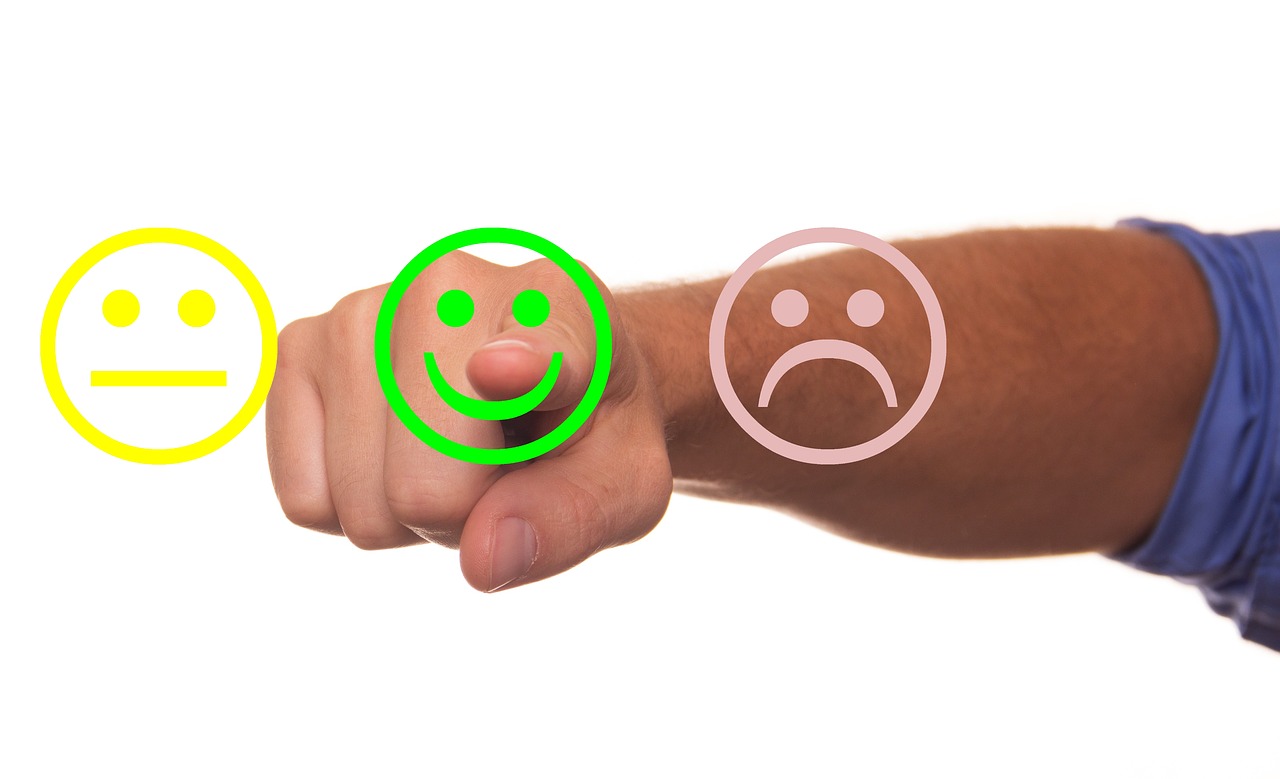How well do you think people view your business? How do you know?
One easy way to find out is to calculate your Net Promoter Score (NPS). Your NPS is the best market research metric for determining your products and services’ effectiveness, coupled with the customer experience you offer. The NPS calculation considers customer loyalty and the likelihood people will talk favorably about your company. The goal with any NPS rating is to understand how your customers rate you on a number scale and how your customer segmentation could be driving your referral business.
How an NPS works
The easiest way to calculate your NPS is through customer surveys. They can be through an online portal like SurveyMonkey, they can be filled out on paper at your shop, on a checkout webpage, or they can be a quick kiosk-style smiley push-button feedback device like you see in the airport bathroom. Each of these gathers your customers’ opinions on a weighted scale. The goal is to compile as many customer reviews as possible and quantify them based on the numerical responses. From there, you calculate who likes and doesn’t like you based on the formula for determining your number of Net Promoters.
Think of it in gross/net terms like your profit or revenue. You could have one person happy with you, one person neutral, and one person who hates you. If the one happy person and the one angry person canceled each other out, how would you rate your performance? If you said just fine, you’re wrong. The neutral customer is hurting you, too.
What’s the formula?
A typical NPS ranking system plots survey responses to critical questions regarding the customer experience on a measurable scale. Let’s use a 10-point scale where 1 is awful, and 10 is exceptionally good. An answer of 1-6 would quantify the customer response as a “Detractor,” meaning they are actively hurting your business because they are likely to tell others negative things about their experience to future prospects. An answer of 7 or 8 would quantify the customer response as a “Passive” and render them obsolete from the metric. These customers didn’t hate you, but they didn’t like you either. Without having an opinion one way or another, that becomes a useless referral to a prospect who needs to know whether or not to do business with you. An answer of 9 or 10 would quantify the customer response as a “Promoter” because they would likely give you a shining endorsement.
😀 9 – 10 Promoter 😕 7 – 8 Passive 😡 1 – 6 Detractor
TL;DR (Too Long; Didn’t Read): You want as many Promoters as possible. 10s are way better than 9s. Watch out for the 1s.
A 9 means it was great, but something still wasn’t there; you can do better. 10 indicates the customers probably would have given you an 11 if it was an option. Conversely, a 1 means they couldn’t give you a lower score. Any time you get the lowest score possible that should be a red flag.
Questions to calculate NPS
The NPS is calculated on a series of specific questions to your company and its products or services. It can be as many questions as you want. More data yields more insights, but beware that longer surveys have higher abandon rates.
In any version, there are three key questions that you need answers for:
- Did you like your experience with our products and/or services?
- Would you buy again?
- Would you tell others to buy?
If you can only ask one question for a basic NPS, it’s No. 3 above. What is the likelihood someone would recommend you to others? This is more powerful than any advertisement. There is no marketing campaign stronger than a recommendation from a person you trust.
Here’s an example
Let’s say you surveyed your last 100 customers on a 10-point scale. When you add up all the scores, you got:
- Fifty 10s
- Thirty 9s
- Ten 8s
- Ten 1s
That breakdown is 80% Promoters, 10% Passives, and 10% Detractors. Throw out your passives, subtract your Detractors from your Promoters, and you get a basic NPS of 70. See below:
😀 80% – 😡 10% = 70
This is an oversimplification, but it can give you the basics of understanding at a high level how you are performing in the eyes of your customers. A perfect NPS is 100. That means everyone loves you, and everyone is selling you to prospects.
Things to beware of
Multiple Passives make you vulnerable to competition, and those customers have likely already left you emotionally. Lumping all your Detractors together in a single group is also very dangerous. A 1 is exponentially worse than a 6. A 6 you may have mildly annoyed, but a 1 you really upset. Multiple 6s mean you can make some slight tweaks to get them back, usually in the form of employee training or being more punctual. The difference between a 9 and 10 is almost always down to transparency and integrity. Did you do exactly what you said you were going to do?
Your business needs an NPS
Fortune 1000 companies use NPSs to calculate how they are perceived in the market and the levels of customer loyalty they can expect for future earnings growth. It is an excellent metric for comparison to others in your industry, and shareholders love it. For a small business, it means whether the phone rings or you get someone walking into your shop.
Predicting customer loyalty is a simple, effective way to gauge the quality of your customer experience and the future potential of your business’s success.





